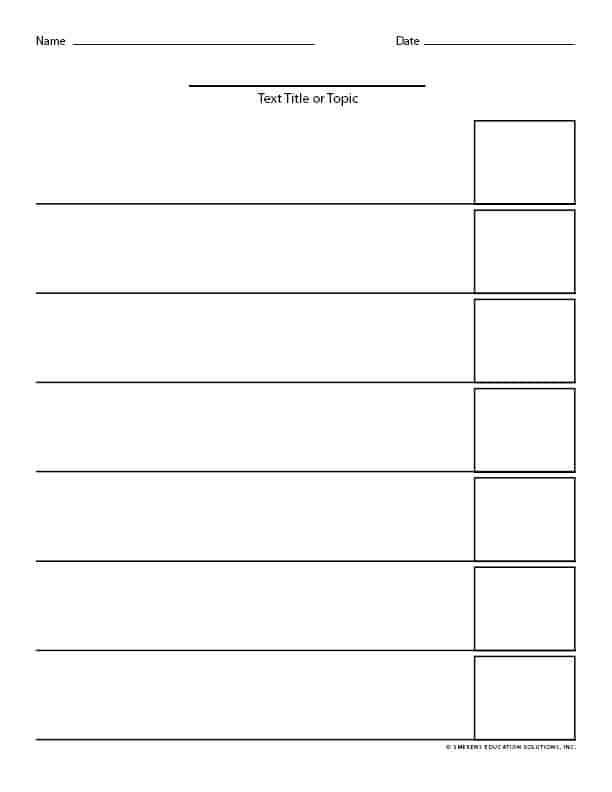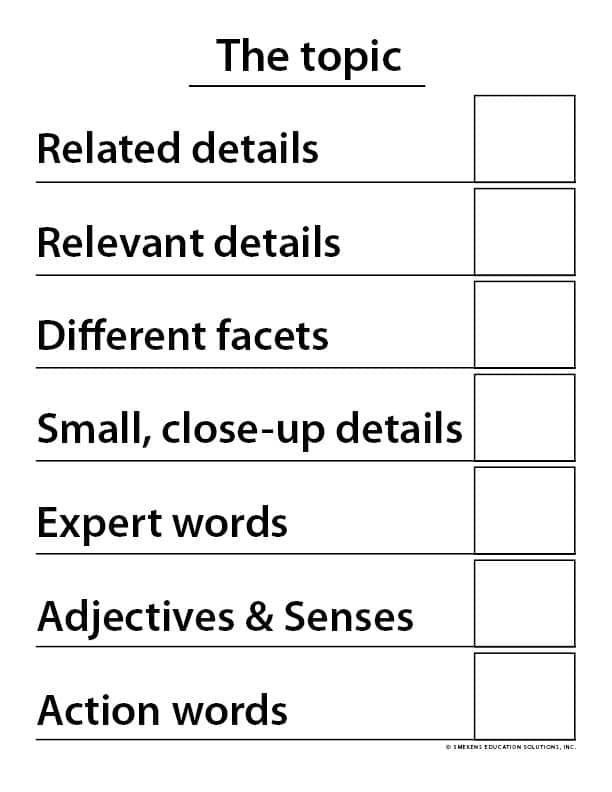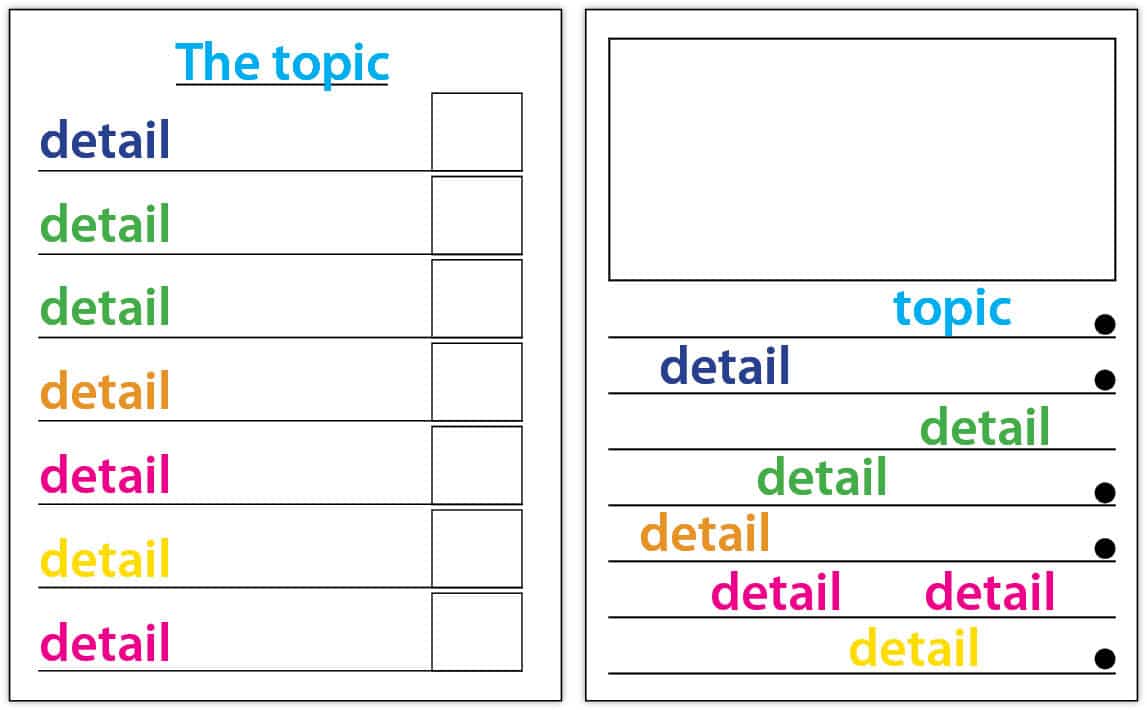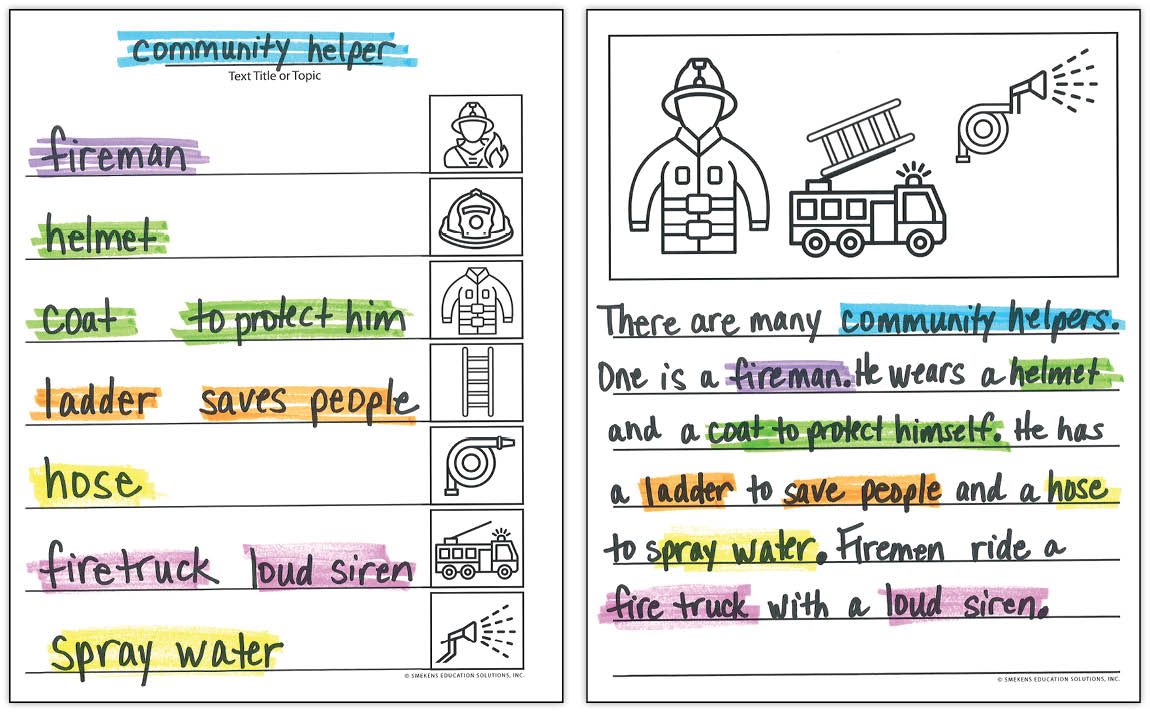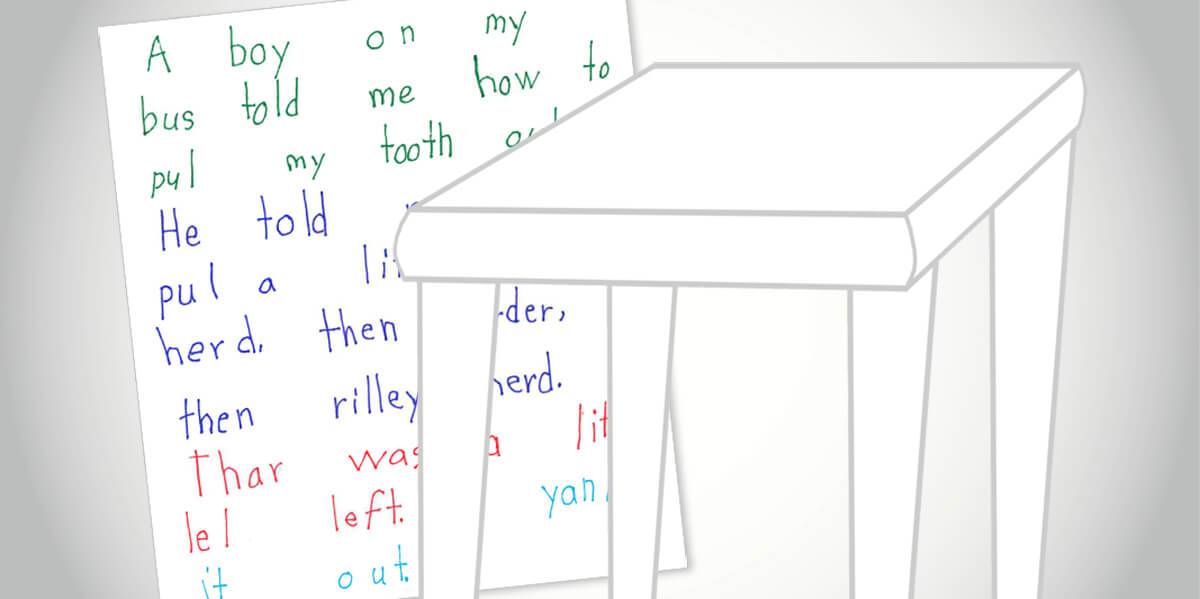Learning Center
Push early writers beyond 1-2 simple sentences
february 13, 2024
Early writers often struggle to generate more than 1-2 sentences—despite consistent instruction. This isn’t surprising. When first mastering the basics of capitalization, punctuation, spelling, and spacing, their limited working memory leaves little room for generating ideas.
With this in mind, temporarily shift the focus away from sentence structure during the second semester and concentrate instead on idea development. This should happen in three phases across February, March, and April.
PHASE 1: Emphasize list writing.
 In February, K-1 teachers might suspend the pressure of writing every thought in a complete sentence. (NOTE: This pause in sentence writing is ONLY during independent writer’s workshop. Sentence-level lessons should continue in other facets of the school day.)
In February, K-1 teachers might suspend the pressure of writing every thought in a complete sentence. (NOTE: This pause in sentence writing is ONLY during independent writer’s workshop. Sentence-level lessons should continue in other facets of the school day.)
Instead, students will create lists of details on topics that they know a lot about. Such lists might include subject-area topics (e.g., weather, life cycles, seasons, community helpers, etc.) or school-related topics (e.g., indoor recess, bus riding, lunch, etc.).
During these weeks, deliver mini-lessons showing students how to develop each topic by brainstorming and writing details on list paper.
Deliver mini-lessons on how:
- Writers note the topic of the list on the first line.
- Writers populate the list with only information relevant to the topic.
- Writers consider various aspects of the topic.
- Writers list the small, interesting, and less obvious details.
- Writers sound like a topic expert with domain-specific vocabulary.
- Writers describe the topic using adjectives and sensory details.
- Writers list action verbs that are related to the topic.
With a month-long focus on list writing, idea development becomes second nature. Students build a habit of thinking beyond general and surface information on a topic, which ultimately boosts their writer stamina. In addition, this provides an opportunity for them to hone their skills in letter formation, spelling, and spacing—without also juggling sentence conventions.
Engage in these list-writing lessons and experiences throughout February. Let the lists themselves be the products. Then, once students grasp “adding details” and “writing more,” it’s time to reinstate sentence-writing expectations.
PHASE 2: Stretch details into sentences.
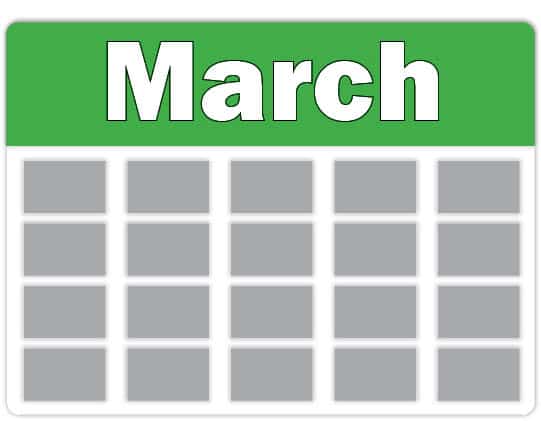 In March, K-1 teachers should return to the previously generated (and saved) lists from Phase 1. Reread a few, acknowledging that each one identifies what the writer would say about a chosen topic. Now, in Phase 2, the writer focuses on how to effectively express these details within well-structured sentences. After reviewing the essential components of a complete sentence, model:
In March, K-1 teachers should return to the previously generated (and saved) lists from Phase 1. Reread a few, acknowledging that each one identifies what the writer would say about a chosen topic. Now, in Phase 2, the writer focuses on how to effectively express these details within well-structured sentences. After reviewing the essential components of a complete sentence, model:
- How to include the topic (listed on the top line) in the first sentence.
- How to stretch a detail into an individual sentence.
- And how to combine 2-3 listed details (adjective, noun, verb, etc.) into a single sentence.
Dedicate March to transforming their detailed lists into multi-sentence writings. Leveraging these pre-generated topic lists alleviates the pressure of brainstorming all new ideas. Now students can channel their mental energy into applying the sentence conventions of capitalization, punctuation, and complete thoughts. After stretching one detail into a sentence, the writer returns to the list of details to write another, and another, and another.
PHASE 3: Establish a new pre-writing process.
 Phase 3 marks a turning point and the implementation of a new pre-writing habit.
Phase 3 marks a turning point and the implementation of a new pre-writing habit.
By April, cease the traditional approach of announcing a writing topic and generating a class-wide list of associated words. Instead, and for the rest of the year, students will brainstorm their own list of topic-related details (Phase 1) and then stretch them into their own sentences (Phase 2) all in one sitting.
This “list and stretch” approach is the cornerstone of effective pre-writing. It is designed to encourage early writers to move from only generating a couple of short sentences to developing richer, longer pieces.


